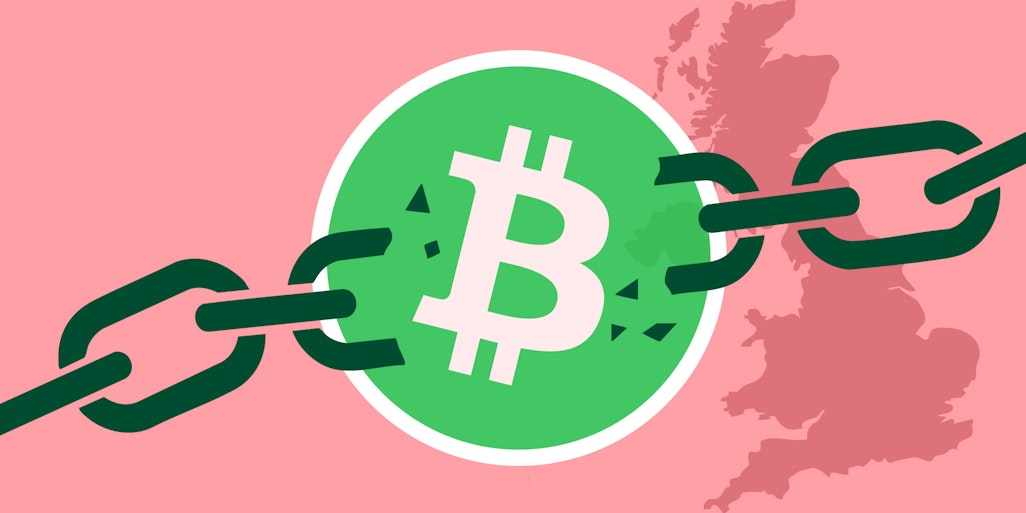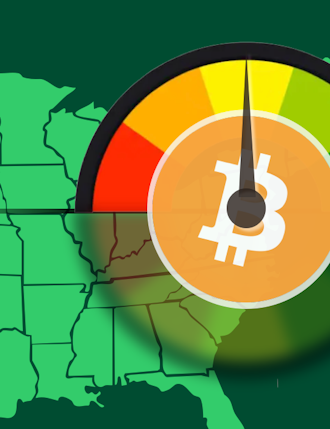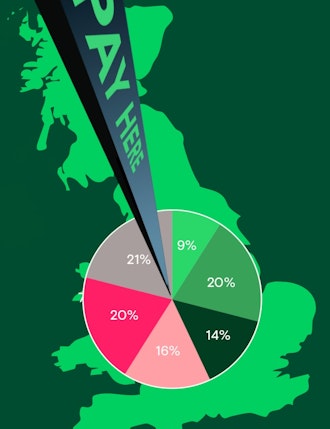Key Insights
-
Younger adults are far more open to using crypto online than any other group, but confidence falls sharply with age.
-
Simpler, smoother payments are the strongest driver of interest as opposed to novelty or peer influence.
-
Women in the UK report lower trust in digital currencies than men across every measure.
-
South East England shows higher-than-average openness and trust, while Central England emerges as notably resistant.
- Across the board, security concerns outweigh value or innovation when it comes to digital currencies.
Don't have time to read more now? Sign up to our newsletter to get the latest insights directly in your inbox.
In our latest research, we surveyed 3,008 adults across the US and the UK to understand how people perceive, understand, and engage with digital currencies such as cryptocurrencies and Central Bank Digital Currencies (CBDCs). While earlier findings explored the gaps in awareness and familiarity, this UK report shifts the focus toward a different barrier to adoption: trust. Specifically, we examined if emotional and real-life concerns continue to shape whether people feel safe using digital currencies in everyday life.
The findings may reveal a now-familiar pattern: curiosity and caution go hand in hand. While some age groups show growing interest, especially online, concerns around fraud, loss, and control are stalling mass adoption. For many, digital currencies still feel more like an experiment than a tool.
If a business such as a shop, café or website accepted digital currency payments, would you be more likely to shop there?
Nationally, half of respondents (50%) say a business accepting crypto as a payment method would make no difference to their purchasing decision, and 15% say it would actually make them less likely to shop there. However, this general ambivalence obscures one of the most important takeaways from our survey: younger adults are significantly more influenced by crypto availability (particularly online).
Consumer openness to digital currency payments, by age:
Among those aged 18–24, 24% said they would "definitely" be more likely to choose an online shop that accepted crypto, compared to just 1% among those aged 55+. Even broader signals of interest ("possibly for online purchases") skew heavily toward under-35s.
Consumer openness to digital currency payments, by gender:
“Gender plays a clear role. 54% of women say it would make no difference, and 17% say they would be less likely to shop if crypto were accepted. For men, it’s 45% and 13%.”
In regional terms, South East England stands out for greater openness: only 43% say acceptance would make no difference (vs. 50% nationally), with above-average interest in both online and in person crypto transactions.
If you already use digital currencies, what makes it appealing? If you don’t, what would persuade you to start?
Here, the generational divide widens further: for under-35s, the top motivator is clear: a simpler payment process. 35% of 18–24-year-olds and 41% of 25–34s chose this as the biggest appeal, beating out security, fees, and regulation. This aligns with our previous findings on UK payment preferences, where ease and speed were key to loyalty among younger shoppers.
Current and potential drivers of digital currency adoption, by age:
"Better security and fraud protection" ranked highest overall, at 25% of women and 31% of men. However, this doesn't mean simplicity is less important across the age ranges, only that it resonates with digital natives.
Current and potential drivers of digital currency adoption, by gender:
Resistance, however, remains steep. Nearly half of women (49%) said nothing would persuade them to adopt crypto, compared to 37% of men. And in Central England, 52% of all respondents agreed with that same sentiment.
How much do you trust the following types of digital currencies as a safe and legitimate way to pay?
Among 25–34-year-olds, 29% trust crypto "a great deal," and 36% trust it "a fair amount." For 55–64s, that drops to just 2% and 13%, respectively.
Consumer trust in cryptocurrency, by age:
“Trust in cryptocurrencies as a legitimate payment method, seems to follow a predictable arc: high among younger adults, collapsing with age.”
Again, trust among women is significantly lower: only 28% say they trust crypto "a fair amount or more," compared to 45% of men.
Consumer trust in cryptocurrency, by gender:
Geographically, South East England reported the highest levels of trust, with 40% expressing some confidence. By contrast, Central England was the most skeptical: 49% said they trust crypto "not at all."
Consumer trust in cryptocurrency, by region:
“CBDCs enjoy slightly more neutrality than cryptocurrencies, but not necessarily more trust.”
Consumer trust in CBDCs, by region:
Only 6% of women and 11% of men said they trust CBDCs "a great deal," with a further 17% and 27% expressing "a fair amount" of trust.
As with crypto, trust peaks with 25–34s, where 61% express moderate or high trust. But again, this falls sharply after age 45, to just 18% among those over 55.
In regional terms, Wales reported the highest level of strong trust (24%), while Central England again emerged as most resistant, with 40% saying they trust CBDCs "not at all."
What are your biggest concerns about using digital currencies?
Trust issues are not theoretical, they are grounded in tangible fears that cut across age, gender, and region:
In fact, 54% of women and 51% of men cite security and fraud as their top concern. Almost half the population (48%) worry about losing access to their funds, whereas 44% point to a lack of regulation as a dealbreaker.
For older respondents, these concerns compound. Among 55–64-year-olds, 59% cite fraud and 51% worry about lack of oversight. Meanwhile, younger respondents are more sensitive to digital privacy: 33% of 18–24s mentioned being tracked as a key issue, compared to around 25% of older adults.
Biggest concerns about using cryptocurrency, by age:
“These responses show that emotional trust gaps are deeply embedded, calling for an urgent need for systems that make them feel protected and in control in order to bring about a wider cultural shift.”
Would you invest in celebrity-themed cryptocurrencies?
Celebrity-themed meme coins briefly captured mainstream attention, riding waves of hype created by viral launches and contentious tokens like Trump’s $TRUMP and $MELANIA, which sparked headlines as well as regulatory scrutiny.
In the UK, even Russ Millions (one of Britain’s biggest rappers) released a coin called $MILLION, which crashed nearly 99% within hours, amplifying concerns about a potential proliferation of pump-and-dump tactics. And UK consumers appear firmly aligned with that skepticism.
“Here, the verdict is nearly unanimous: UK respondents completely reject celebrity-themed coins. An astounding 65% of women and 58% of men say they would not invest.”
But even among younger adults, rejection is high: only 26% of 25–34s would consider it. Somewhat predictably, this rejection grows with age: from 64% (45–54) to 91% (65+).
Across the UK, rejection rates were highest in South West England (74%) and Central England (70%).
The implication? Celebrity and gimmicks don’t work. Utility, trust, and clarity matter more than novelty or branding. Interestingly, although still a high rejection rate, the UK appears to be even less attracted to celebrity-endorsed coins than the US.
Summary:
This research shows that trust is now the defining barrier to digital currency adoption in the UK. While awareness and regulations are expected to grow, the deep-seated concerns around security, regulation, and control are holding back widespread engagement.
Trust in both cryptocurrencies and CBDCs is highest among younger users, especially those aged 25–34. This group is the most open to adoption, the most trusting, and the most motivated by simplicity and ease of use. Among them, 29% say they trust crypto "a great deal," and 41% say a smoother payment process would persuade them to adopt it.
By contrast, resistance grows steeply with age. Among those 55+, 66–69% say that crypto acceptance would make no difference to their shopping decisions, and 58–71% say nothing would make them want to use it. Older adults are also the most concerned with regulation and fraud, indicating that emotional risk aversion plays a significant role in their disengagement.
Women in the UK show markedly lower trust across every category, citing as top concerns: fraud (54%) and fund loss (48%), reinforcing that product adoption will require more than improved UX, but a marked shift in confidence able to reassure and downplay risks, especially for a gender that has been canonically cut out from the wider grassroot conversation around crypto adoption.
Regionally, South East England is more crypto-ready than average, reporting higher trust and lower rejection, however, Central England is at risk of lagging in adoption, with higher-than-average resistance to both crypto and CBDCs.
Finally, celebrity-backed digital currencies are near-universally rejected, even among younger audiences. Public appetite clearly leans toward credible, secure, and practical tools over speculative branding.
In conclusion, digital currency adoption in the UK hinges less on awareness and more on emotional legitimacy. If crypto is to become part of everyday financial life, trust must be earned, not assumed.
Think you’ve got a handle on digital currencies? Put your knowledge to the test with this quiz.
Methodology:
This report is based on a representative survey of 1,004 adults across the United Kingdom. The data was analysed by key demographic and geographic factors, including age range, gender, region, and proximity to the nearest major city. Regional-level findings are only reported where the sample size was sufficiently robust to support meaningful analysis.
Interested in reading more around this subject? Here are some useful articles…













